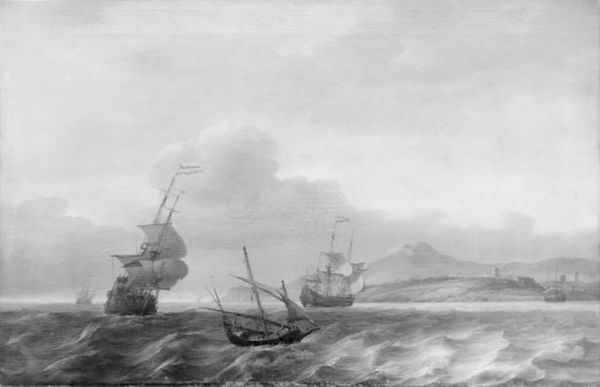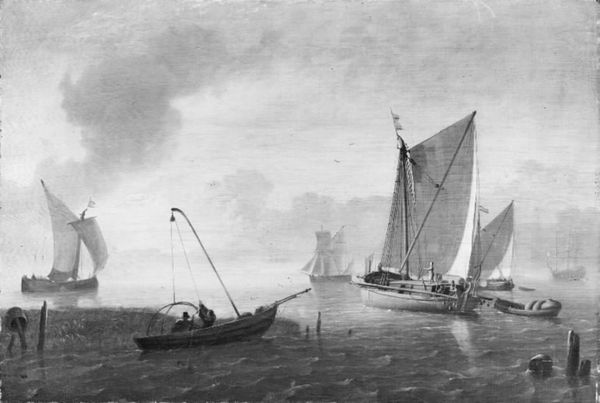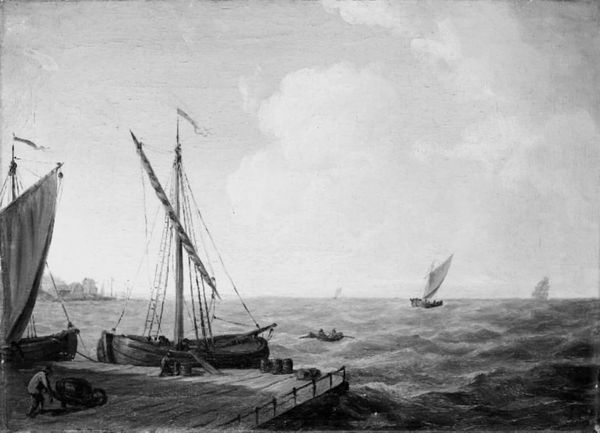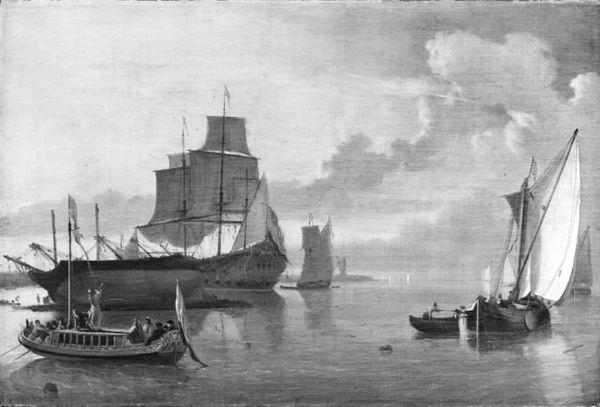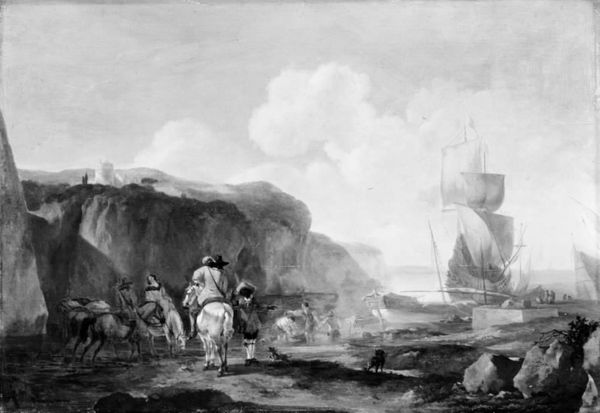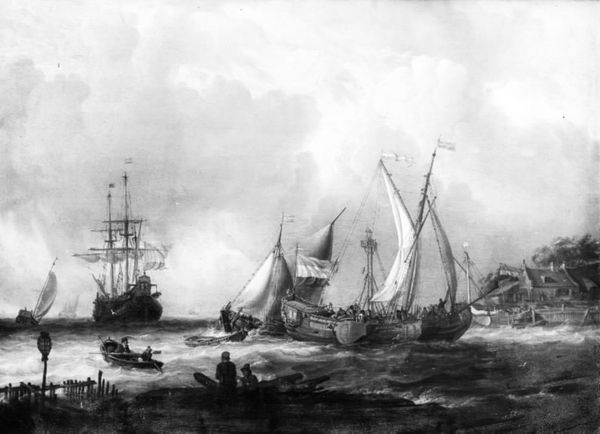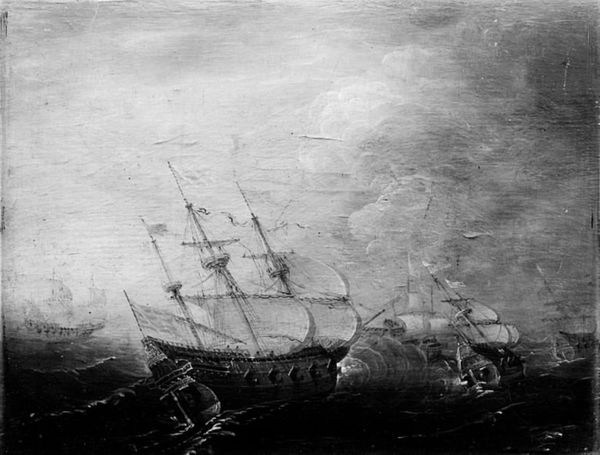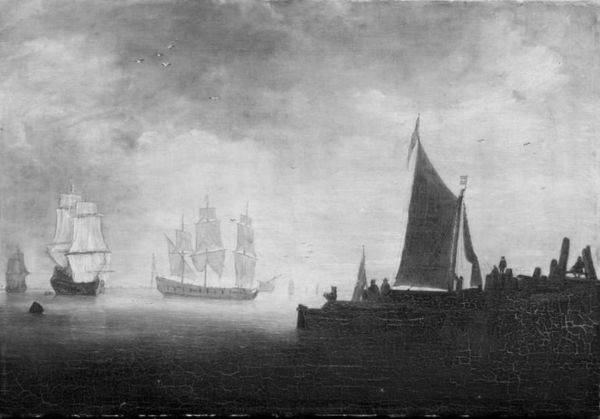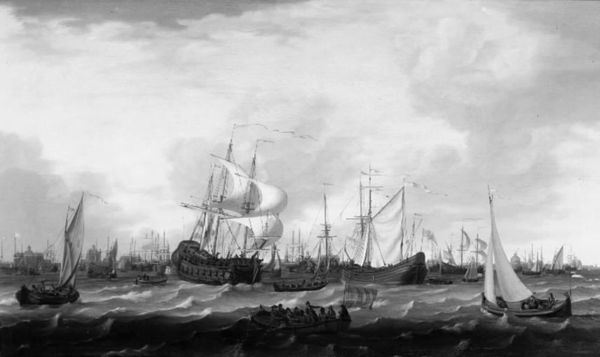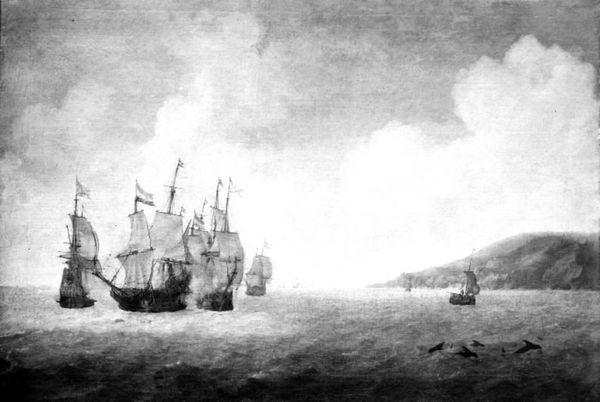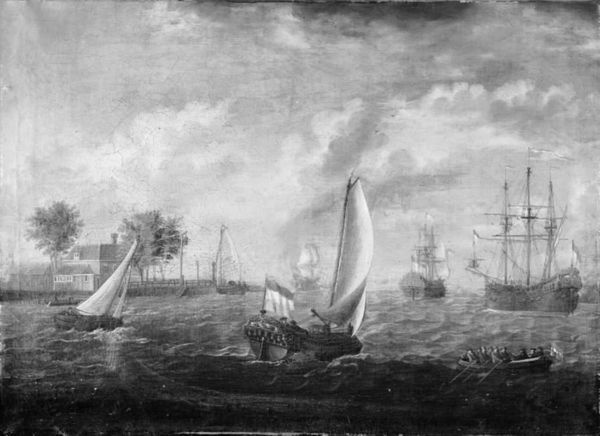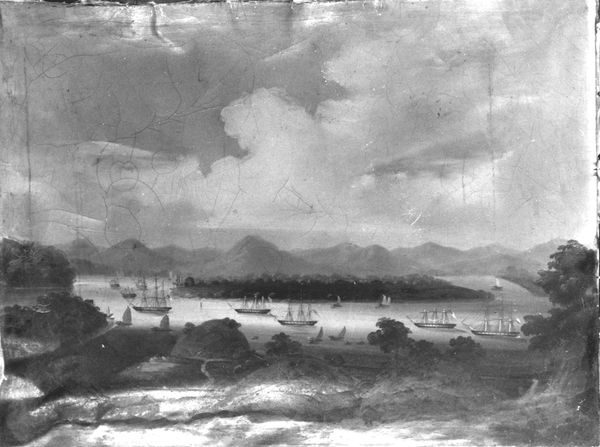
painting, oil-paint
#
baroque
#
painting
#
oil-paint
#
landscape
#
cityscape
#
genre-painting
Dimensions: 65 cm (height) x 99.5 cm (width) (Netto)
Curator: Jan Theunisz. Blanckerhoff's oil painting, simply titled "Seascape," made sometime between 1643 and 1669, really pulls you in, doesn't it? It’s currently held at the SMK, the Statens Museum for Kunst. Editor: Immediately, I’m struck by the tranquility of it. The muted palette evokes a certain calmness. It's funny how seascapes can stir up such emotion despite being seemingly still. It's more melancholic than adventurous, perhaps. Curator: Considering the prevalence of Dutch maritime power at that time, this image, with its depiction of various vessels, tells a story beyond the aesthetic. It brings to mind the immense labor and resource extraction required to create and maintain this bustling sea transport economy. What stories of trade are implied here? Editor: Yes! And it brings to mind the materiality of those ships—timber sourced from who knows where, canvas painstakingly woven, iron forged. All of that labour reflected in these peaceful surfaces... Though you do wonder, viewing it now, is there perhaps a hint of imperial unease already? Or am I reading too much into the overcast sky? Curator: Not at all. It invites that kind of contemplation. Also note Blanckerhoff's brushwork, which contributes greatly to that pervasive atmospheric effect. Analyzing the paint itself helps us comprehend the material choices driving both this atmosphere and the broader context of artistic production. Editor: Absolutely, look how that rough impasto gives the waves this very subtle feeling of constant motion; it’s almost like a suppressed energy or drama about to break forth. I imagine him at his easel really lost in it. Is it just me, or does anyone else feel like climbing right into the scene? Curator: Right? It would be tempting to research the pigments utilized to capture those atmospheric subtleties to connect them with trade networks as well. It all speaks to a fascinating intersection of artistic intent, material reality, and social dynamics. Editor: I'm left with that distinct sensation of quiet observation. It’s not loud. It invites us to reflect, connect to history. Blanckerhoff did something profound, revealing layers underneath the calm veneer of those merchant ships at the water's edge. Curator: Agreed. Exploring it together, through the layers of material and impression, certainly deepens appreciation, doesn’t it? A perfect illustration of intertwined art history, really!
Comments
No comments
Be the first to comment and join the conversation on the ultimate creative platform.
